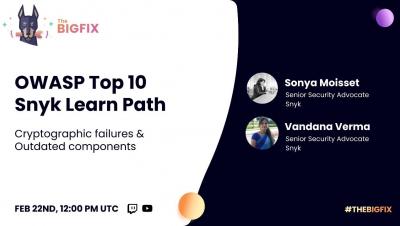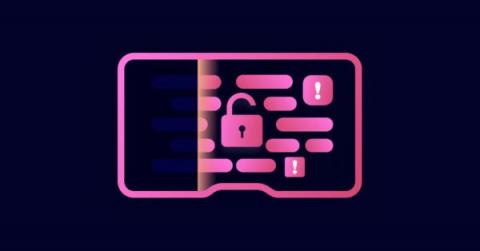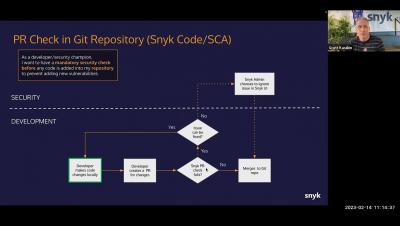Security | Threat Detection | Cyberattacks | DevSecOps | Compliance
Snyk
Three expert tips for cultivating secure software development practices
We often hear about the importance of DevSecOps — integrating security into DevOps processes. But as many security professionals know, it’s not nearly as easy as it sounds. Cultivating secure software development practices requires working alongside developers with varying opinions, priorities, and idiosyncrasies. And any process involving humans is complicated. So, how do today’s security teams overcome these challenges and make secure software development practices a reality?
Finding YAML Injection with Snyk Code
I conducted some research to try and identify YAML Injection issues in open-source projects using Snyk Code. Though the vulnerability itself is not a new one, the potential impact of YAML Injection is high, which made it a good candidate for research. This research led to the discovery of several issues in open-source projects written in Python, PHP and Ruby. This article focuses on the issue found in geokit-rails version 2.3.2, a plugin for Ruby on Rails
The security concerns of a JavaScript sandbox with the Node.js VM module
Were you tasked with building a product that requires the execution of dynamic JavaScript originating from end users? You might think building it on-top of Node.js VM module is a viable way to create a JavaScript sandbox. In this article, we’ll learn why that’s far from being a recommended approach and the security implications of doing so. Every now and then there’s a project that challenges the rudimentary and routine backend development. APIs? Message queues?
The Big Fix. OWASP TOP 10 Snyk Learn Path (Cryptography & Outdated Components)
Adi Sharabani, Snyk CTO On Adapting to Change: The Future of Security in a DevSecOps World
A Day In The Life of A CISO - Prajal Kulkarni - CISO - Groww
When software isn't a "supply"
I was inspired to write this after reading a post from Thomas Depierre on Mastodon. The post touched on something that’s been troubling me recently. When it comes to software security, we spend a lot of time talking about the software supply chain and related concepts, such as the software bill of materials (SBOM). This metaphor comes from an industrial lexicon. People who are used to talking about economies and how manufacturing works are familiar with the idea of supply chain.
The dangers of setattr: Avoiding Mass Assignment vulnerabilities in Python
Mass assignment, also known as autobinding or object injection, is a category of vulnerabilities that occur when user input is bound to variables or objects within a program. Mass assignment vulnerabilities are often the result of an attacker adding unexpected fields to an object to manipulate the logic of a program.










